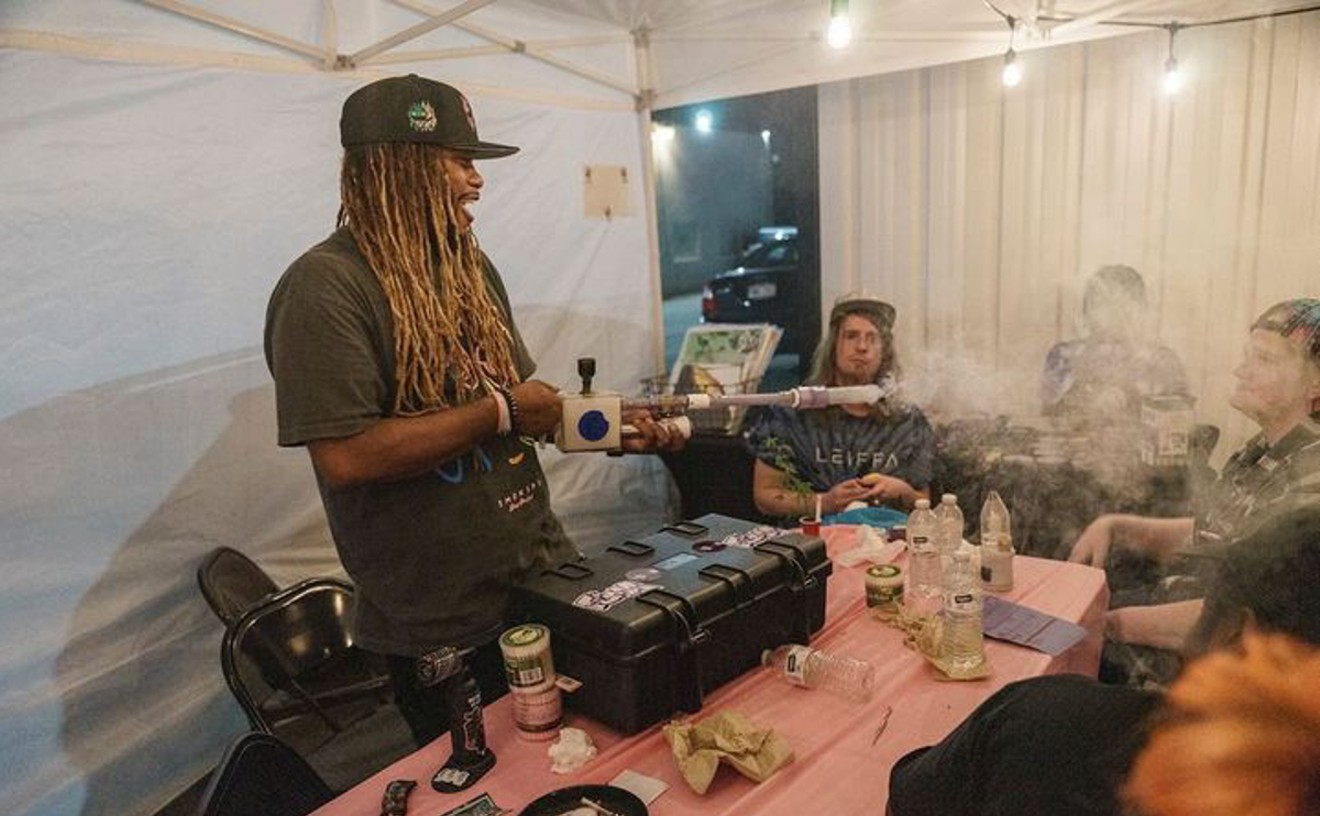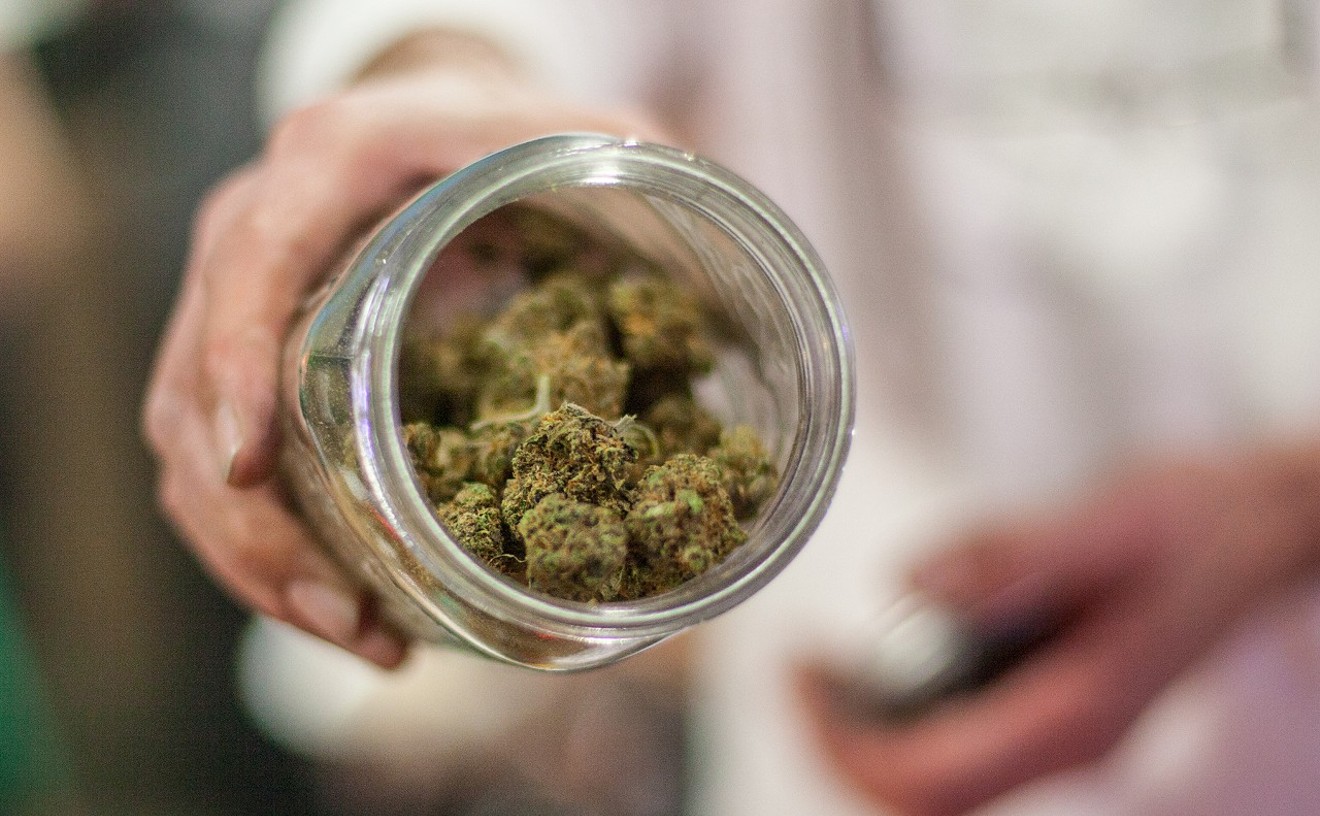Some of us like our weed to be so dry that it ignites under sunlight, making that first hit a knockout. But most cannabis users want their stash to last. That's where humidity comes in.
While many people curse humidity in the heat of summer, it plays a key role in preserving the quality of cannabis during storage. As anyone who's kept a bag of weed for more than a few days knows, nugs can dry out fast without proper storage, but they can lose their flavor and potency, too. We caught up with Sean Knutsen, president of Boveda, a company that makes humidity-control packs for weed jars, to learn more about effective stash storage.
Westword: Boveda reminds me of those freshness packs in beef jerky bags. Similar concept?
Sean Knutsen: Many natural products are best stored or maintained within a controlled environment. Those freshness packs (desiccants) in your beef jerky are designed to absorb as much moisture as possible, aka one-way humidity control. Boveda is two-way humidity control technology for cannabis, which adds consistency and precision to the storage environment. Instead of just absorbing as much moisture as possible like a dessicant does, Boveda precisely controls the environment to a specific level of relative humidity (RH). This means that more than just eliminating moisture, Boveda delivers the best or preferred humidity level. For products like cannabis or hand-rolled cigars, that means both quality and safety are preserved.
Why is humidity control important for cannabis users? What if I'm someone who finishes my stash weekly?
We have done a lot of testing around how evaporation can degrade cannabis, hemp and other natural products. The results may surprise you — even hours can matter. Perfectly preserved cannabis can lose or gain ten-plus points in moisture content in a day or less. A sure sign of this effect can be measured by the volume of aroma coming off the bud into your container’s headspace. That smell comes from the terpenes that are evaporating from the trichome part of the flower. This is the good stuff you want to keep for your experience! For medicinal or microdose applications, this lost potency can significantly impact the medicinal benefits of that strain.
In my earlier days, some of my friends just threw their jars of weed in the shower to moisten them up. What's wrong with doing that?
Ahh, those kids... Cannabis always needs to be stored in environments below 65 percent RH to remain safe for consumption. Anytime cannabis is exposed to humidity levels above 65 percent, it is at risk of mold and microbial contamination. Our testing shows that exposing cannabis to high humidity for even a few hours can take it from dry to being at risk of mold propagation in less than a day. The scary part is that mold is difficult to see, and consuming moldy cannabis can introduce a significant health risk to even healthy individuals — not to mention the added risk for medical cannabis consumers such as those with compromised immune systems.
What's the right level of moisture a bud should have? At what point does it get too dry?
Industry standards have identified 55 to 65 percent RH to be the safest and most optimal range to store cannabis. We found that the negative effects of evaporation on cannabis potency and quality begin around 50 percent RH. What is “too dry” is difficult to define — the factors we recognize as important to most consumers are potency and smoking experience. The evaporation that occurs below 55 percent RH is compromising potency and quality every day the flower is at those levels. Most strains also begin to deliver a harsh taste or experience as they continue to lose moisture below 50 percent RH.
Beyond just evaporation impacting potency, as the bud dries, its trichomes, which hold the terpenes and cannabinoids, become brittle and are prone to breaking off, leaving the consumer less of the good stuff. We advocate storing cannabis in that safe zone below 65 percent RH and above 50 percent RH. Going lower begins to compromise the experience.
How are tobacco and cannabis products similar or different when it comes to humidity control? Should cannabis smokers start thinking about cigar rooms or boxes now?
They are more alike than you may think. Both need to be spared from the negative effects of evaporation. Cigars can lose the sugars and oils that define their flavor profile, and cannabis can lose the terpenes and cannabinoids that produce the flavor and effect. When stored in environments that are too humid, both are prone to mold and microbial growth. For the real cannasseur, a cannador would make a great gift! Similar to cigar humidors, cannadors are constructed out of wood and are designed to breathe. They are made out of aromatic wood that is designed to enhance the flavors of their contents. Cannadors are great ways to show off your best buds and often double as useful rolling stations. Also, similar to cigar humidors, there needs to be a two-way humidity control solution to ensure that buds are kept both fresh and safe.
On top of humidity control, how can someone save a certain strain of flower for a long time? Any other best practices?
Beyond too high or low moisture levels, we believe that exposure to sunlight, extreme temperatures and oxygen pose the biggest threats to the long-term storage of cannabis. We recommend containers like CVault and Re:stash for people who are looking to preserve their buds over months or years. Both brands provide airtight, light-proof storage that is also designed to hold Boveda packets for two-way humidity control.
[
{
"name": "Air - MediumRectangle - Inline Content - Mobile Display Size",
"component": "12017618",
"insertPoint": "2",
"requiredCountToDisplay": "2",
"watchElement": ".fdn-content-body",
"astAdList": [
{
"adType": "rectangle",
"displayTargets": "mobile"
}
]
},{
"name": "Editor Picks",
"component": "17242653",
"insertPoint": "4",
"requiredCountToDisplay": "1",
"watchElement": ".fdn-content-body",
"astAdList": [
{
"adType": "rectangle",
"displayTargets": "desktop|tablet"
},{
"adType": "rectangle",
"displayTargets": "desktop|tablet|mobile"
}
]
},{
"name": "Inline Links",
"component": "18838239",
"insertPoint": "8th",
"startingPoint": 8,
"requiredCountToDisplay": "7",
"maxInsertions": 25
},{
"name": "Air - MediumRectangle - Combo - Inline Content",
"component": "17261320",
"insertPoint": "8th",
"startingPoint": 8,
"requiredCountToDisplay": "7",
"maxInsertions": 25,
"watchElement": ".fdn-content-body",
"astAdList": [
{
"adType": "rectangle",
"displayTargets": "desktop|tablet"
},{
"adType": "rectangle",
"displayTargets": "desktop|tablet|mobile"
}
]
},{
"name": "Inline Links",
"component": "18838239",
"insertPoint": "8th",
"startingPoint": 12,
"requiredCountToDisplay": "11",
"maxInsertions": 25
},{
"name": "Air - Leaderboard Tower - Combo - Inline Content",
"component": "17261321",
"insertPoint": "8th",
"startingPoint": 12,
"requiredCountToDisplay": "11",
"maxInsertions": 25,
"watchElement": ".fdn-content-body",
"astAdList": [
{
"adType": "leaderboardInlineContent",
"displayTargets": "desktop|tablet"
},{
"adType": "tower",
"displayTargets": "mobile"
}
]
}
]













